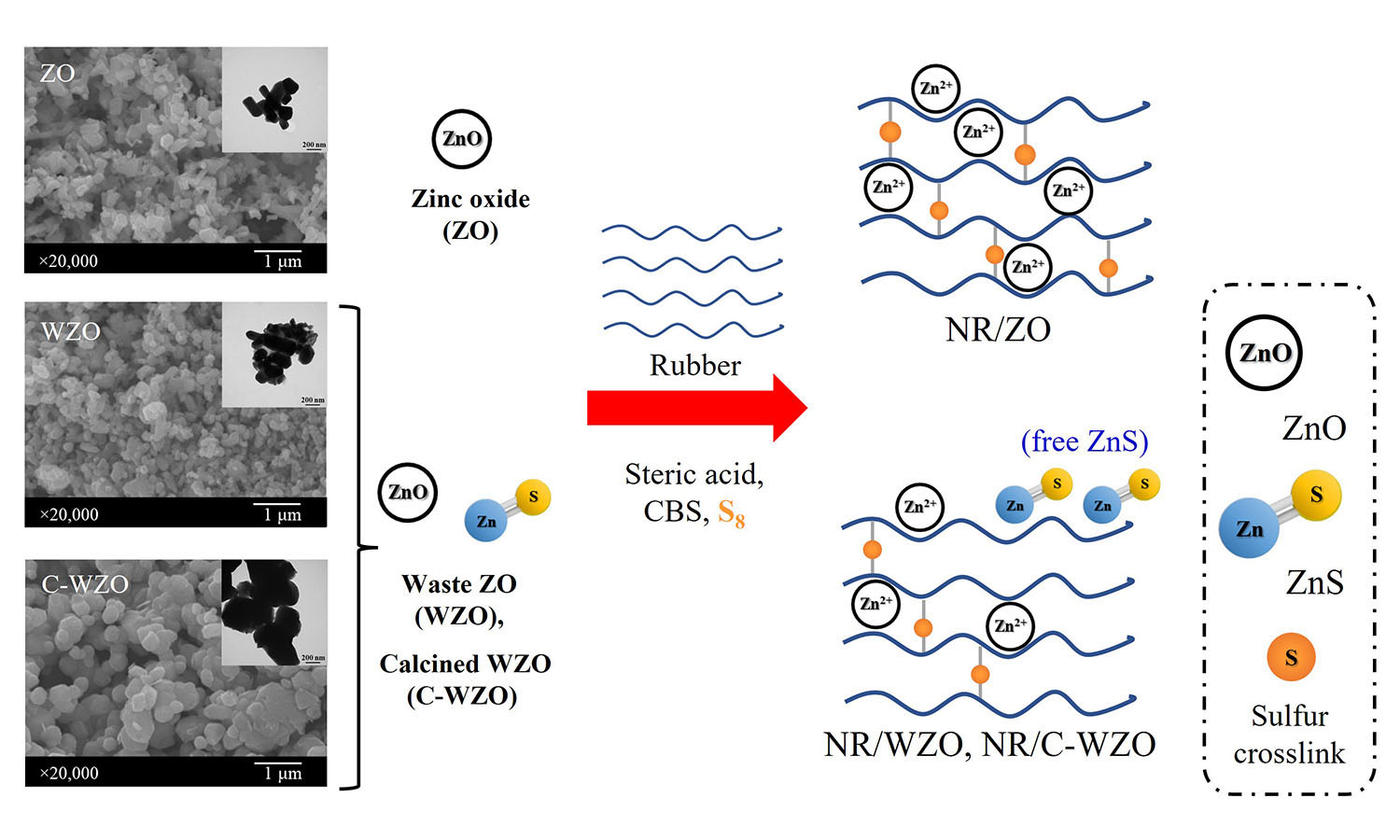Effect of waste zinc oxide particles on properties of natural rubber vulcanizates
Dusadee Tumnantong, Pattarapan Prasassarakich, Sirilux Poompradub
Vol. 17., No.3., Pages 290-299, 2023
DOI: 10.3144/expresspolymlett.2023.21
DOI: 10.3144/expresspolymlett.2023.21
GRAPHICAL ABSTRACT

ABSTRACT
Natural rubber (NR) vulcanizates with waste zinc oxide (ZnO) particles were prepared through a sulfur vulcanization process. This research aimed to investigate the effect of different ZnO sources as an activator: commercial ZnO (ZO), waste ZnO obtained from a ceramic industry (WZO), and calcinated WZO (C-WZO) on the properties of NR vulcanizates. The ZnO particles were characterized using X-ray fluorescence spectrometer, X-ray diffractometer, and transmission electron microscopy. It was found that the calcination at 800 °C for 6 h could reduce the sulfur components in WZO; consequently, the particle size and appearance were changed. For rubber vulcanizates, the composition of ZnO in the activator had an effect on the crosslink density of the obtained vulcanizates, resulting in changes to the mechanical tensile, thermal, and dynamic mechanical properties. The crosslink density, tensile strength, and tear strength of the rubber vulcanizate filled with C-WZO (NR/C-WZO (II), 0.18 mmol/cm3, 21.3 MPa, 68.4 N/mm, respectively) was acceptable for rubber products compared with those of the vulcanizate filled with ZO (NR/ZO, 0.19 mmol/cm3, 26.4 MPa, 71.6 N/mm, respectively). Accordingly, C-WZO could be used as an effective activator in rubber vulcanization.



